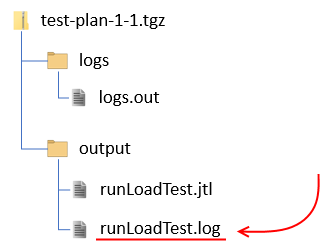When you run a load test on RedLine13, you have the option of saving detailed output files. Generating these files can be accomplished by ticking the “Save Response Output and Calculate Percentiles” checkbox when starting your test:

Enabling this option not only stores output files for your test, but also generates and saves percentiles information. This option is available for any test type, however it will provide the most detailed information when used with a JMeter test (which is also our most popular test type).
Where to Find Output Files
You can find output files at the completion of your test under the “Output Files” section of the test results page. Here you will be presented with several options for downloading these files.

For each load generator server, you will be able to download a *.tgz archive which will contain the log files for your test, as well as additional output files depending on the test type. Furthermore for JMeter tests, we also make the JTL file available both inside the archive for individual servers, or merged for all servers as a separate link.
Output File Structure
As described above, primarily output files are made available as *.tgz archives for each individual load generator server. Once extracted, you can expect the file structure resemble the following example:

The main log file (indicated above) can be found in the “ouput” subfolder. This example is also a JMeter test and therefore contains the JTL file alongside it. Depending on your test type, you may have other types of files alongside the main *.log file.
Other Considerations
There are a few special circumstances to be aware of when attempting to save and download output files for your load test. The first is that this feature is only available for paid subscriptions and free trial periods. The second important consideration is that for very large load tests, generation of these files will be offloaded to worker instances and will take a few minutes to display after your test completes. This brief delay is normal and expected due to the potentially large volume of data which must be processed immediately after such a test completes.
